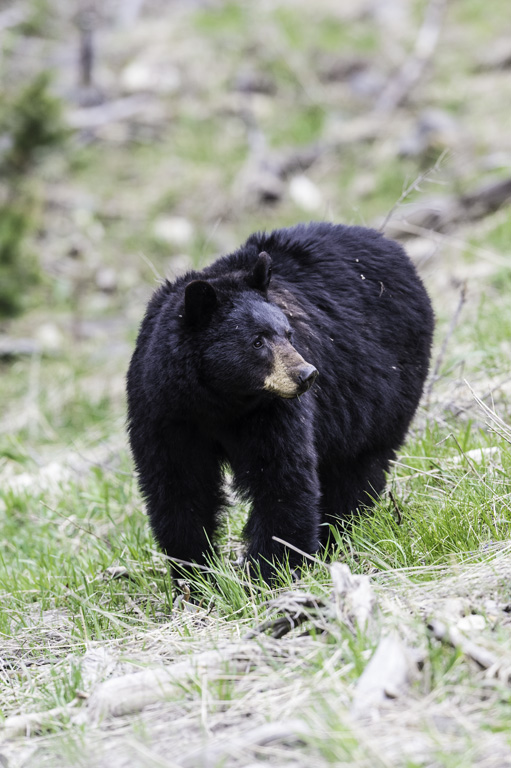
Despite its name, the black bear’s fur can also be many shades of brown – the color depends on habitat and climate. In California, black bears are rarely full black.
FAMILY
Ursidae, the family of eight bear species
RANGE
Throughout North America, from Mexico to Canada
Important Environmental Factors

Greater than 500 millimeters rainfall per year

Altitudes of ~300-3,000 meters

Moderate to high tree canopy cover
Habitat and Behavior
American black bears can still be found in much of their historical range. They inhabit diverse habitats, including deserts and dry scrub forests, swamps, and rainforests. As an omnivorous generalist, what the black bear eats depends on where it lives. In California, they are primarily found in mountainous areas, where they forage for insects in the spring and acorns and berries in the fall. They will also hunt young deer, but most of their diet is plant based.
Human Food Sources
Black bears are highly adaptive, and when natural food sources are scarce, they are more likely to be drawn to human food and garbage. In fact, the National Park Service used to attract bears to food and trash at “bear pits,” where visitors could watch the bears feed [2]. Now, however, we know that once habituated to human food (and human presence), bears may feed less on their natural foods and become more aggressive in their attempts to obtain human food. Visitors to parks and wilderness areas are thus strongly discouraged from feeding bears and other wild animals.
Threats
Apart from mountain lions (and coyotes and bobcats, which may attack bear cubs), humans are the only predator of the black bear. In the early 1900s, black bear populations declined rapidly in many portions of their range due to unregulated hunting and loss of forest cover. Thanks to protective measures in 1980s and onward, they have begun to recover. Today, there are about 30,000 black bears in California [3]. However, human-bear conflicts still occur as urban and suburban areas expand into bear habitat.

Data source:
Species records provided by iNaturalist
References:
- Scheick and McCown (2014) in Ursus 25(1).
- National Park Service, “Bear Management“
- California Dept of Fish and Wildlife, “Black Bear“